
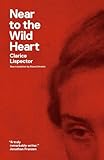 New Directions’ The Complete Stories by Clarice Lispector, translated by Katrina Dodson and edited by Benjamin Moser, is a splendorous achievement. For the first time in any language, readers can turn to a single volume for all the short stories by the twentieth-century Brazilian writer affectionately known by her unusual first name, that enigmatic woman born in a small village in the Ukraine in 1920 to Jewish parents who fled the country when she was barely a year old. This is the sixth New Directions book
New Directions’ The Complete Stories by Clarice Lispector, translated by Katrina Dodson and edited by Benjamin Moser, is a splendorous achievement. For the first time in any language, readers can turn to a single volume for all the short stories by the twentieth-century Brazilian writer affectionately known by her unusual first name, that enigmatic woman born in a small village in the Ukraine in 1920 to Jewish parents who fled the country when she was barely a year old. This is the sixth New Directions book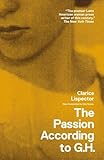
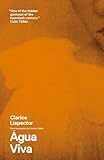 by Clarice to appear in less than four years under the helm of series editor Moser, who is also the author of Why This World: A Biography of Clarice Lispector (Oxford University Press 2009). The other five are new translations of the novels Near to the Wild Heart, A Breath of Life, Água Viva, The Passion According to G.H. and The Hour of the Star. Each book has a different translator, which suits the multivalent spirit of Clarice’s strange and unsettling oeuvre.
by Clarice to appear in less than four years under the helm of series editor Moser, who is also the author of Why This World: A Biography of Clarice Lispector (Oxford University Press 2009). The other five are new translations of the novels Near to the Wild Heart, A Breath of Life, Água Viva, The Passion According to G.H. and The Hour of the Star. Each book has a different translator, which suits the multivalent spirit of Clarice’s strange and unsettling oeuvre.
Clarice is a writer obsessed with language, how it moves and breathes, how far it can be pushed and pulled apart, how it breaks down. Her prose, in the stories and novels and newspaper columns, follows overarching themes: how language is used to create identity, what is at stake when a narrator narrates, the reality of fiction, how words can be used to establish and maintain power, the failure of language when humans (and occasionally animals) want to communicate, silence and the unspeakable. Much of her writing features women whose lives unfold in domestic spaces, women who navigate traditional feminine duties such as housework and caregiving alongside the perils and pleasures of love, motherhood, romance, sex, money, and the mysteries of the world beyond the front door.
Men too populate Clarice’s stories: Marcel Pretre, the French explorer in “The Smallest Woman in the World”; Artur, the high school student who finds himself increasingly misunderstood by his parents in “Beginnings of a Fortune”; the bigamist Xavier and his two live-in girlfriends livid about the prostitute he favors for dirty talk in “The Body”; and the beggar who receives a five hundred cruzeiro banknote from high society wife Carla de Sousa e Santos because she doesn’t have change in “Beauty and the Beast or the Big Wound.” There are husbands, boyfriends, brothers, and sons, men in all manner of professions and affective arrangements. Clarice never considered herself to be a woman writer or a writer of women’s literature. Language, muscular and mystical, is her supreme concern, and language is universal.
“The Crime of the Mathematics Professor”: Clarice’s Debut in English
The first translation of Clarice’s work in English appeared in December 1961. William L. Grossman and José Roberto Vasconcellos’ version of “The Crime of the Mathematics Professor” debuted in the Odyssey Review, published by the Latin American and European Literary Society. It was later included in Grossman’s anthology Modern Brazilian Short Stories, published by the University of California Press in 1967. The story follows a mathematics professor, the dog he abandons when he moves to a new city with his family, and the dog he kills “in tribute” to the abandoned dog. Despite the professor’s careful calculations, a kind of moral mathematics he seeks to deploy, he fails to redeem his crime (of abandonment, of desire to rid himself of his original dog, of killing) by solemnly burying the dead creature before him. As translated by Grossman and Vasconcellos, in the final paragraph he decides to unbury the dead dog:
It looked unfamiliar with earth on its lashes and with its open, glazed eyes. Thus, the mathematics professor renewed his crime eternally. He looked to the sky and to the earth around him, asking them to witness what he had just done. Then he started down the hill toward the little city below.
Here is Katrina Dodson’s version from New Directions’ Complete Stories, which she titles “The Crime of the Mathematics Teacher”:
The dark dog at last appeared whole, unfamiliar with dirt in its eyelashes, its eyes open and glazed over. And thus the mathematics teacher renewed his crime forever. The man then looked around and to the heavens beseeching a witness to what he’d done. And as if that still weren’t enough, he started descending the slopes toward the bosom of his family.
In Clarice’s original, the final sentence is: “E como se não bastasse ainda, começou a descer as escarpas em direção ao seio de sua familia.” Dodson’s version is word for word in tune with the original.
Elizabeth Bishop’s Translations of “Three Stories by Clarice Lispector”
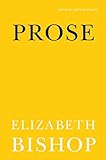
 Elizabeth Bishop published her “Three Stories by Clarice Lispector” — “The Smallest Woman in the World,” “A Hen,” and “Marmosets” — in the summer 1964 issue of The Kenyon Review. For years these translations were somewhat hidden gems. Bishop never included them in any of her books the way she did with her poetry translations. Readers can now find the trio of stories in two recent Bishop compilations: Library of America’s Bishop: Poems, Prose, and Letters (2008) and Farrar, Straus and Giroux’s Prose: Elizabeth Bishop (2011). The evocative triptych features three female creatures vying for agency, if not survival, in the face of human interaction: Little Flower, the smallest woman in the world, squares off against the French explorer Marcel Pretre who claims to have “discovered” her in the “depths of Equatorial Africa”; the Sunday hen is due to be killed for supper by the humans she lives with; and Lisette the marmoset is purchased by the narrator as a pet for her children one summer day in Copacabana. (For a sense of how Dodson handles her translations of these stories, it might suffice to say that she titles two of them differently: “A Chicken” and “Monkeys.”)
Elizabeth Bishop published her “Three Stories by Clarice Lispector” — “The Smallest Woman in the World,” “A Hen,” and “Marmosets” — in the summer 1964 issue of The Kenyon Review. For years these translations were somewhat hidden gems. Bishop never included them in any of her books the way she did with her poetry translations. Readers can now find the trio of stories in two recent Bishop compilations: Library of America’s Bishop: Poems, Prose, and Letters (2008) and Farrar, Straus and Giroux’s Prose: Elizabeth Bishop (2011). The evocative triptych features three female creatures vying for agency, if not survival, in the face of human interaction: Little Flower, the smallest woman in the world, squares off against the French explorer Marcel Pretre who claims to have “discovered” her in the “depths of Equatorial Africa”; the Sunday hen is due to be killed for supper by the humans she lives with; and Lisette the marmoset is purchased by the narrator as a pet for her children one summer day in Copacabana. (For a sense of how Dodson handles her translations of these stories, it might suffice to say that she titles two of them differently: “A Chicken” and “Monkeys.”)
Clarice and Bishop were neighbors during the time Bishop shared an apartment with Lota de Macedo Soares in Leme, Rio de Janeiro. Bishop first arrived in Brazil in late 1951, while a freshly separated Lispector moved back to Rio in 1959 alone with her two sons after 15 years of living abroad with her diplomat husband. In late 1962, Bishop gave Lispector a selection of nine of her own poems — “Questions of Travel,” “Manuelzinho,” “Electrical Storm,” “Brazil, January 1, 1502,” “Song for the Rainy Season,” “The Armadillo,” “Sandpiper,” “The Riverman,” and “A Norther—Key West” — along with the following hand-written note: “For Clarice Lispector, from her admiring translator, Elizabeth Bishop; Rio, November 22, 1962.” When I first fixed my eyes on this sheath of papers at the Clarice Lispector Archive at the Museu Casa de Rui Barbosa in Rio’s Botafogo neighborhood, years ago as a graduate student, my hands shook with excitement upon recognizing Bishop’s small, slightly slanted handwriting in the upper-right hand corner of the first typed page.
Bishop’s translations of Clarice’s stories suggest overlapping thematic interests: questions of foreignness, the feminine, motherhood, language, identity, and the relationships between humans and animals. Questions of self-possession. In addition to this Clarice-as-rendered-by-Bishop prism, a kind of conversation between two great literary minds, the most important thing about the Bishop translations is the fact that their publication led to additional translations of Clarice’s work in English. Bishop considered taking on one of Clarice’s novels, but ultimately declined. In her May 26, 1963, letter to Robert Lowell, she wrote: “Knopf apparently is definitely interested in one of her novels. I’ve refused to do any of that kind of translating, however. It’s too boring & time-wasting.” The Apple in the Dark, the very un-boring novel translated by Gregory Rabassa and published by Knopf, appeared in 1967 and clocks in at well over 300 pages. That same year Bishop published an original trio of texts — the prose-poems “Giant Toad,” “Strayed Crab,” and “Giant Snail” — grouped under the title “Rainy Season; Sub-Tropics” in The Kenyon Review. Bishop’s Sub-Tropic trio offers a kind of lyrical response to her 1964 Clarice translations.
Katrina Dodson’s Clarice: “A One-Woman Vaudeville Act”
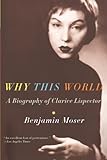 I have always been fascinated by the fact that Clarice might have been an English language writer. I say this because when her family fled the Ukraine in 1921, they first landed in a refugee hostel in Bucharest, and from there they waited to see whether their relatives in the United States or Brazil would sponsor them. When they heard from Clarice’s maternal aunt and her husband in Brazil, they were issued passports by the Russian consulate in Bucharest and traveled to Hamburg where they would board the Cuyabá, a homeward-bound Brazilian ship. The Lispectors crossed the Atlantic and arrived in the northeastern port town of Maceió, which, as described in Moser’s Why This World, had a dock “graced with its own replica of the Statue of Liberty.” But it was no Manhattan. And if the Lispectors had heard from Clarice’s mother’s half-siblings in the United States first? In my mind, this twist of fate heightens the stakes for Clarice’s English-language translators. Many have tried to render her into what might have been her mother tongue: Grossman and Vasconellos, Bishop, Rabassa, Alexis Levitin, Giovanni Pontiero, Earl Fitz and Elizabeth Lowe. And there is the new crop of translators recruited by Moser, including Dodson, Idra Novey, Stefan Tobler, Alison Entrekin, and Johnny Lorenz.
I have always been fascinated by the fact that Clarice might have been an English language writer. I say this because when her family fled the Ukraine in 1921, they first landed in a refugee hostel in Bucharest, and from there they waited to see whether their relatives in the United States or Brazil would sponsor them. When they heard from Clarice’s maternal aunt and her husband in Brazil, they were issued passports by the Russian consulate in Bucharest and traveled to Hamburg where they would board the Cuyabá, a homeward-bound Brazilian ship. The Lispectors crossed the Atlantic and arrived in the northeastern port town of Maceió, which, as described in Moser’s Why This World, had a dock “graced with its own replica of the Statue of Liberty.” But it was no Manhattan. And if the Lispectors had heard from Clarice’s mother’s half-siblings in the United States first? In my mind, this twist of fate heightens the stakes for Clarice’s English-language translators. Many have tried to render her into what might have been her mother tongue: Grossman and Vasconellos, Bishop, Rabassa, Alexis Levitin, Giovanni Pontiero, Earl Fitz and Elizabeth Lowe. And there is the new crop of translators recruited by Moser, including Dodson, Idra Novey, Stefan Tobler, Alison Entrekin, and Johnny Lorenz.
 In Clarice’s final work The Hour of the Star, a slim novel published in 1977 mere weeks before her untimely death of ovarian cancer at age 57, she dedicates “this thing here” to a number of composers including Schumann, Beethoven, Bach, Chopin, Stravinsky, Debussy, Prokofiev, Carl Orff, Schoenberg, and “to the twelve-tone composers, to the strident cries of the electronic generation — to all those who reached the most alarmingly unsuspected regions within me, all those prophets of the present and who have foretold me to myself until in that instant I exploded into: I.” I have no doubt that “all those prophets” include her translators, past, present, and future. She goes on to describe the “I” she “exploded into” and to invoke — provoke — her translators and readers, critics and champions: “This I is all of you since I can’t stand being just me, I need others in order to get by, fool that I am.”
In Clarice’s final work The Hour of the Star, a slim novel published in 1977 mere weeks before her untimely death of ovarian cancer at age 57, she dedicates “this thing here” to a number of composers including Schumann, Beethoven, Bach, Chopin, Stravinsky, Debussy, Prokofiev, Carl Orff, Schoenberg, and “to the twelve-tone composers, to the strident cries of the electronic generation — to all those who reached the most alarmingly unsuspected regions within me, all those prophets of the present and who have foretold me to myself until in that instant I exploded into: I.” I have no doubt that “all those prophets” include her translators, past, present, and future. She goes on to describe the “I” she “exploded into” and to invoke — provoke — her translators and readers, critics and champions: “This I is all of you since I can’t stand being just me, I need others in order to get by, fool that I am.”
Katrina Dodson, who recasts the Complete Stories into English with an energetic mastery that feels utterly contemporary while evoking the intoxicating dissonance of the original Portuguese prose, calls reading Clarice’s work “a disorienting experience” in her “Translator’s Note.” Dodson then candidly discusses her translation process:
Translating Clarice has meant growing attuned to the ways her sly surrealism, which can veer into the absurdist or fantastical, is embedded in her style. The logic of a deceptively simple narrative or series of declarations becomes distorted or ends in non sequiturs. … The most dizzying feature in Clarice’s writing are the surprises on the level of the sentence. Certain combinations seem contradictory or disproportionate like “delicate abyss,” or “horribly marvelous.” The usual expression takes a detour, as when an elderly matriarch scornfully calls her offspring “flesh of my knee” instead of “flesh of my flesh.” A comma trips up the pace where it doesn’t seem to belong, like a hair she’s placed in your soup. … In keeping up with Clarice’s shifting registers and translating nearly four decades of work in two years’ time, I’ve often felt like a one-woman vaudeville act, shouting, laughing, crying, musing, singing, and tap-dancing my way breathlessly across the stage.
I can attest that attempting to translate Clarice is no easy venture. I tried when I was a graduate student enrolled in the famed UCLA translation workshop with the late Michael Heim, indefatigable teacher, generous mentor, and formidable translator of Milan Kundera, Thomas Mann, Anton Chekhov, and Günter Grass, among others. He assigned us the task of finding an “impossible text” to translate, precisely so he could teach us how to make good choices as translators faced with worst-case scenarios. I settled on Clarice’s short story “Silence,” which I read as a statement on how to live and how to write. I figured that redeploying her “Silence” into English would help me better glean Clarice’s wisdom. Here is my scratchy version of the opening paragraph:
It is so vast, the silence of the mountain evening. It is so uninhabited. A vain attempt is made not to hear it, to think quickly in order to disguise it. Or to create an agenda, the fragile stitch that barely ties us to the suddenly improbable tomorrow. How to transcend that peace that watches us. Silence so big that hopelessness is ashamed. Mountains so tall that hopelessness is ashamed. Both ears prick up, the head leans, the entire body listens: not a sound. Not a cock crows. How to be within reach of silence’s profound meditation. Of that silence without memory of words. If it is death, how to reach you.
And here is Dodson’s undoubtedly superior translation, where the connection between silence and death, and more specifically between the second-person narrator’s avoidance of silence and enchantment with death, is made much more clear while maintaining the edginess and multiple layers of the original:
The silence of the night in the mountains is so vast. It is so desolate. You try in vain to work not to hear it, to think quickly to cover it up. Or to invent some plans, a fragile stitch that barely links us to the suddenly improbable day of tomorrow. How to surmount this peace that spies us. A silence so great that despair is ashamed. Mountains so high that despair is ashamed. The ears prick, the head tilts, the whole body listens: not a murmur. Not a rooster. How to come within reach of this deep meditation on the silence. On that silence without memory of words. If thou art death, how to reach thee.
Dodson’s successful rendition of Clarice’s “Silence” and my long ago attempt both point to what Moser highlights in his “Introduction” to the Complete Stories:
Clarice undid reflexive patterns in grammar. She often had to remind readers that her “foreign” speech was not the result of her European birth or an ignorance of Portuguese. One of the most highly educated women of her generation was no more ignorant of the standard Brazilian language than Schoenberg was of the diatonic scale, or Picasso of anatomy.
In his “Translator’s Afterword” to The Hour of the Star, Moser says: “no matter how odd Clarice Lispector’s prose sounds in translation, it sounds just as unusual in the original.” He assures us, however, that “her books are not untranslatable.” He believes that Clarice’s translators must “resist the temptation to explain or rearrange her prose, which can only flatten it and remove from it that ‘foreign’ aura that is its hallmark, and its glory.” The hair in one’s soup, as Dodson sees it. Glittering.









